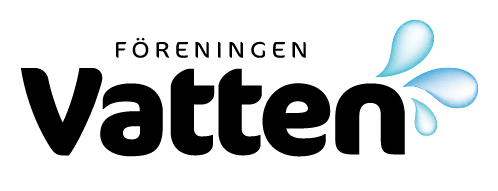The Gothenburg Water and Sewage Works celebrates this year its 200th anniversary. Today Gothenburg Water and Sewage Works is one of the biggest supermarkets in the country. – delivers 200,000 m3 drinking water daily – is open around the clock – delivers the water at the customers premises through a reliable distribution system and takes […]
Publiceringsdatum
Författare
JAN ADAMSSON
Nummer
2
Årgång
43
Utgåva
Vänern har sitt enda utlopp till havet genom Göta älv. Älven är med ett medelvattenflöde av ca 550 m3/s Sveriges vattenrikaste vattendrag. Till långt mer än 90 % av tiden är älven en utmärkt råvattentäkt. Man kan producera ett dricksvatten av god kvalitet. Genom de kontinuerliga mätningarna spåras alla större utsläpp i Göta älv. Genom […]
Publiceringsdatum
Nummer
2
Årgång
43
Utgåva
The City of Gothenburg got its first water supply system two hundred years ago, in 1787, when water from the spring at Kallebäck was conveyed to the town centre. Later on installations at the Delsjö Lakes and at Alelyckan were built, in 1870 and 1894 respectively. At the present time the City’s supply of drinking […]
Publiceringsdatum
Författare
ANDERS PETTERSSON
Nummer
2
Årgång
43
Utgåva
Extensive automation and computerization of the production and distribution of the City’s supply of drinking water have been carried out in recent years. The central computer is an ASEA MasterPiece 240 with a Tesselator 8000, printers for printing occurrences and reports and hardcopies of the display printouts. The subsidiary control points consist of programmable control […]
Publiceringsdatum
Författare
ANDERS PETTERSSON
Nummer
2
Årgång
43
Utgåva
Göteborg har alltsedan 1894 Göta älv som råvattentäkt. Detta har ständigt medfört kvalitetsproblem. Vattenreningen har fått anpassas efter förutsättningarna – utvecklingsarbetet måste vara målinriktat och resultera i en snabb förbättring av vattenkvalitén. Vattnet renas genom klorering, flockning, avsättning, filtrering genom aktiverat kol (activated carbon) samt desinfektion med klor och klordioxid. Vattnet efteralkaliniseras och natriumsilikatlösning tillsättes. […]
Publiceringsdatum
Författare
TIBOR NEMETH
Nummer
2
Årgång
43
Utgåva
The water network in Gothenburg has a length of 1,530 km and consists mainly of cast iron pipes. The pipes are up to 100 years old and the biggest diameters are 1,200 mm. To establish the need for reinvestments during the next 10 to 15 years, a master plan has been worked out, setting out […]
Publiceringsdatum
Författare
OLLE LJUNGGREN
Nummer
2
Årgång
43
Utgåva
Any change in water flow rate in pipes, regardless of the rate or magnitude of change, requires that the water be accelerated or decelerated from its initial flow velocity. A force is required to change the velocity of he flow and this force occurs as a hydraulic pressure transient in the pipe. The most common […]
Publiceringsdatum
Författare
BERNT PERSSON
Nummer
2
Årgång
43
Utgåva
The network for distribution of water in Gothenburg amounts to 1,500 km pipes. About 60 % of the length has an average age of 50 years and is made of cast iron, 20 % is ductile iron and has an average age of 10 years. The waterlosses in 1985 were 26 % of the produced […]
Publiceringsdatum
Författare
SVEN-ERIK KRISTENSON
Nummer
2
Årgång
43
Utgåva
A master plan for sewerage in Gothenburg has been developed. The Water and Sewage Works serves 30,000 inhabitants in a 140 km2 area. The sewers have a total length of 2,233 km. The first Gothenburg master plan for sewerage was adopted in 1866. Combined sewers were laid until 1957. Therafter separate storm sewers have been […]
Publiceringsdatum
Författare
BERNT PERSSON
Nummer
2
Årgång
43
Utgåva
The first water pipe from Kallebäck completed in 1787 consisted of bored up timber of aspen and pine. It had served for 104 years when it in 1891 was replaced by a new cast iron pipe. Cast iron have since then been the dominating material of the pipes. Nowadays pipes with inside corrosion isolation of […]
Publiceringsdatum
Författare
BÖRJE JELTIN
Nummer
2
Årgång
43
Utgåva
